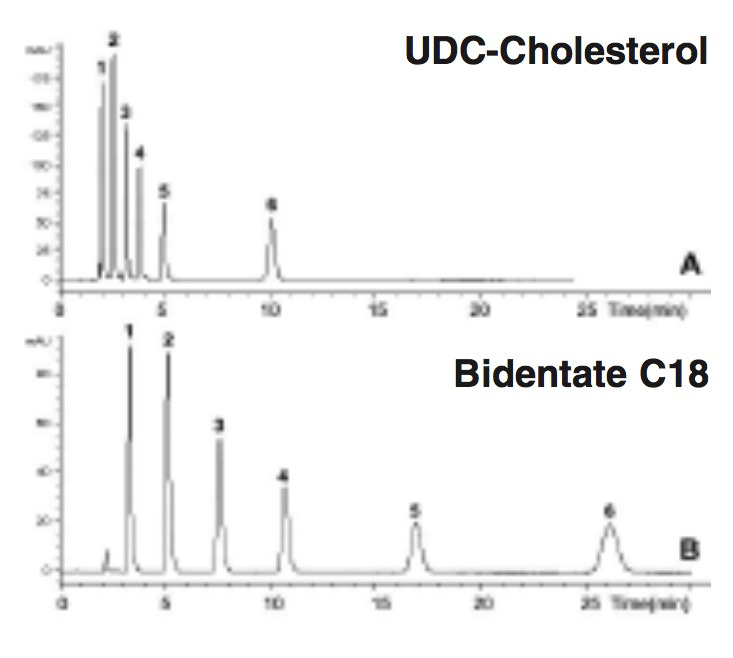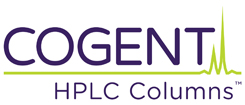Separation of Planar Molecules in HPLC using the Cogent UDC-Cholesterol Column
When comparing Cogent UDC-Cholesterol™ and Cogent Bidentate C18™ Columns, the Cholesterol phase is generally less hydrophobic under the conditions in this Application Note. However from the two Chromatograms shown, a very interesting property of the Cholesterol Phase can be observed; the Cholesterol Column exhibits enhanced Selectivity for Anthracene when compared with the C18 Column.
The Selectivity factor (alpha) for both Columns is listed in Table 1 below. The Anthracene molecule is much longer and planar when compared to the Tert-butylbenzene molecule. While the Retention is clearly lower for the Cholesterol Column the Selectivity for Anthracene with respect to Tert-butylbenzene is considerably higher than the C18 Column.
This phenomenon is due to the fact that Cholesterol is a liquid crystal in the native state and that it retains a relatively ordered structure on the surface under certain conditions. While this example is with relatively simple molecules, the principle will work for complex drugs and in any type of Separation involving Selectivity for planar molecules vs. nonplanar or more bulky molecules.
Peaks:
1. Benzene
2. Toluene
3. Ethylbenzene
4. Isopropyl benzene
5. Tert-butylbenzene
6. Anthracene
Method Conditions
Columns:
—A: Cogent UDC-Cholesterol, 4μm, 100Å
—B: Cogent Bidentate C18, 4μm, 100Å
Catalog Nos:
—A: 69069-7.5P
—B: 40018-75P
Dimensions: 4.6 x 75mm
Mobile Phase: 70% Methanol / 30% DI Water
Injection vol.: 5μL
Flow rate: 1mL / minute
Detection: UV @ 254nm
Sample Preparation: Universal LC Test Mix
Table 1:
| Column Used | k1′ | k2′ | a=k2’/k1′ |
| A. UDC-Cholesterol | 4.11 | 9.46 | 2.30 |
| B. Bidentate C18 | 19.98 | 31.49 | 1.58 |
Attachment
No 42 Shape and Size Selectivity of HPLC Columns pdf 0.2 Mb Download File




